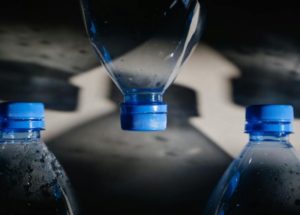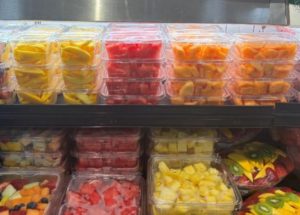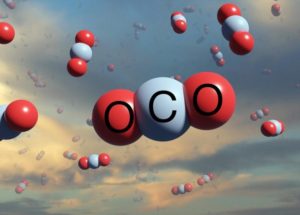Jun 27, 2025
What Do Those RIC Symbols on the Bottom of Packaging Mean?
RIC numbers (1–7) identify plastic types, not recyclability — e.g., “1” means PET, “2” means HDPE, “5” means PP. Symbols help sort plastics, so recyclers know what material they’re handling — not an assurance your local program recycles it. Consumer confusion is common — many mistake RIC for a recycling promise, leading to sorting mistakes. […]
Read More +
Jun 23, 2025
Do You Know What Happens to Your Recycling When It Gets Picked Up from the Curb?
Understand the recycling process: Curbside pickup → MRF sorting (optical, mechanical, manual) → cleaned and processed materials. Single-stream vs. dual-stream affects contamination and sorting efficiency. Prep right: rinse lightly, remove hazardous items, and don’t bag recyclables. Tailor packaging to local systems: know what your regional MRF accepts and educate customers accordingly. “Reduce. Reuse. Recycle.” This […]
Read More +
Jun 20, 2025
Do PET Post-Consumer Recycled Materials Contain PFAS? What Our Testing Revealed
Post-consumer recycled content can be PFAS‑free — lab tests on PET with 10–100% PCR showed no detectable PFAS, easing health concerns. PFAS fears may be overstated, as contamination didn’t appear despite theoretical worries. Ongoing testing and supplier checks are key to maintaining safety as recycling processes evolve. Sustainable + safe = possible — brands can […]
Read More +
Jun 18, 2025
The Truth About Plastic Food Packaging Sustainability
Plastic food packaging sustainability hinges on life-cycle impact: efficient production offsets heavier alternatives like glass or metal. Plastic outperforms heavier materials in CO₂e when accounting for weight, transport, and food waste prevention. Microplastics aren’t a major source from packaging, unlike textiles or paints. Beyond recycling: strategies like eco-design, circular systems, producer responsibility, and consumer education […]
Read More +
Jun 16, 2025
Molded Fiber Food Containers: Promise or Problem?
Molded fiber food containers offer compostable benefits, but often need barrier coatings that may include PFAS or plastic. They lack clarity and durability, making them better for quick-turn items than long shelf-life products. Production is slower and more expensive than plastic due to complex forming and drying steps. Innovation is underway, but molded fiber isn’t […]
Read More +
Jun 13, 2025
Do You Know How Quality Plastic Packaging Reduces Food Waste?
Quality packaging fights food waste in America by extending freshness and preventing spoilage through barrier protection and smart design. Sealing, portion control, and durability cut down on damage and over-consumption. Lightweight plastic reduces transport losses, lowering breakage and carbon impact versus heavy packaging. Investing in packaging pays off, balancing cost and sustainability while supporting fresher […]
Read More +
Jun 11, 2025
The Reality of Post-Consumer Recycled Materials in Plastic Packaging
Post-consumer recycled materials vary in quality, depending on source, sorting, and contamination — real-world PCR isn’t always consistent. PCR adds color/odor challenges, meaning branding, clarity, and food safety must be carefully managed. Regulatory compliance is non-negotiable, requiring PCR materials to meet FDA/food-contact standards before use. Transparent testing and supplier partnerships are essential to harness PCR […]
Read More +
Jun 06, 2025
Plastic Bans 101: What You Need to Know as a Food Industry Professional
Plastic bans target specific single-use items, not all packaging — common hits include bags, foam containers, straws, utensils, and small water bottles. Rules vary widely, with a mix of city and state regulations, plus some states blocking local bans. Business impact includes packaging changes, cost shifts, and tracking compliance across regions. Trends to watch: lead […]
Read More +
May 28, 2025
The U.S. Plastics Pact: What Food Business Pros Need to Know
Plastic pact initiatives push brands toward PCR and circular systems, driving targets like 30% post-consumer recycled content and eliminating problematic plastics. Participation reduces risk, helping companies avoid future bans and align with retailer and policy expectations. Reports and data from the Pact offer actionable market insights, guiding strategic packaging decisions. Adapting takes time and investment, […]
Read More +
May 26, 2025
Understanding Carbon Footprints: A Must for Food Industry Professionals
Understanding carbon footprints helps optimize packaging, tracking CO₂e from resin to disposal to identify reduction opportunities. Lightweight plastics lower emissions, often outperforming heavier alternatives in overall lifecycle impact. Food waste prevention is vital, as packaging that keeps food fresh significantly cuts embedded carbon. Data-driven decisions pay: using LCA tools and benchmarking leads to smarter, greener […]
Read More +











